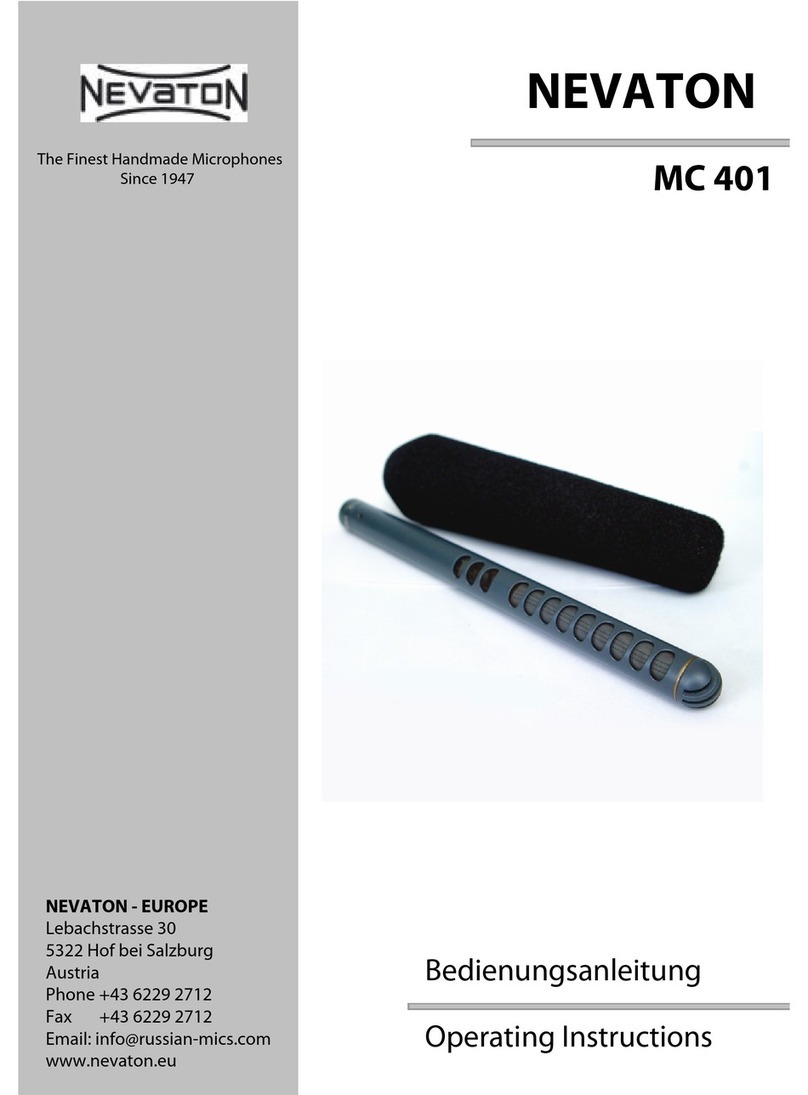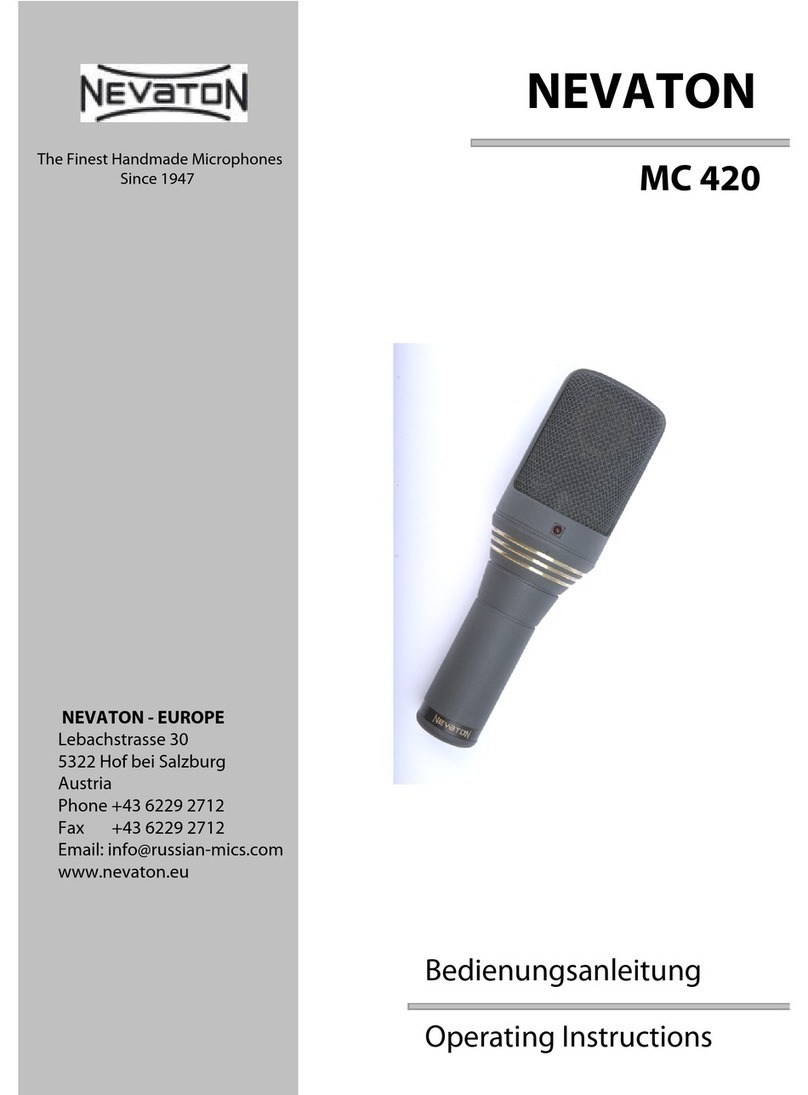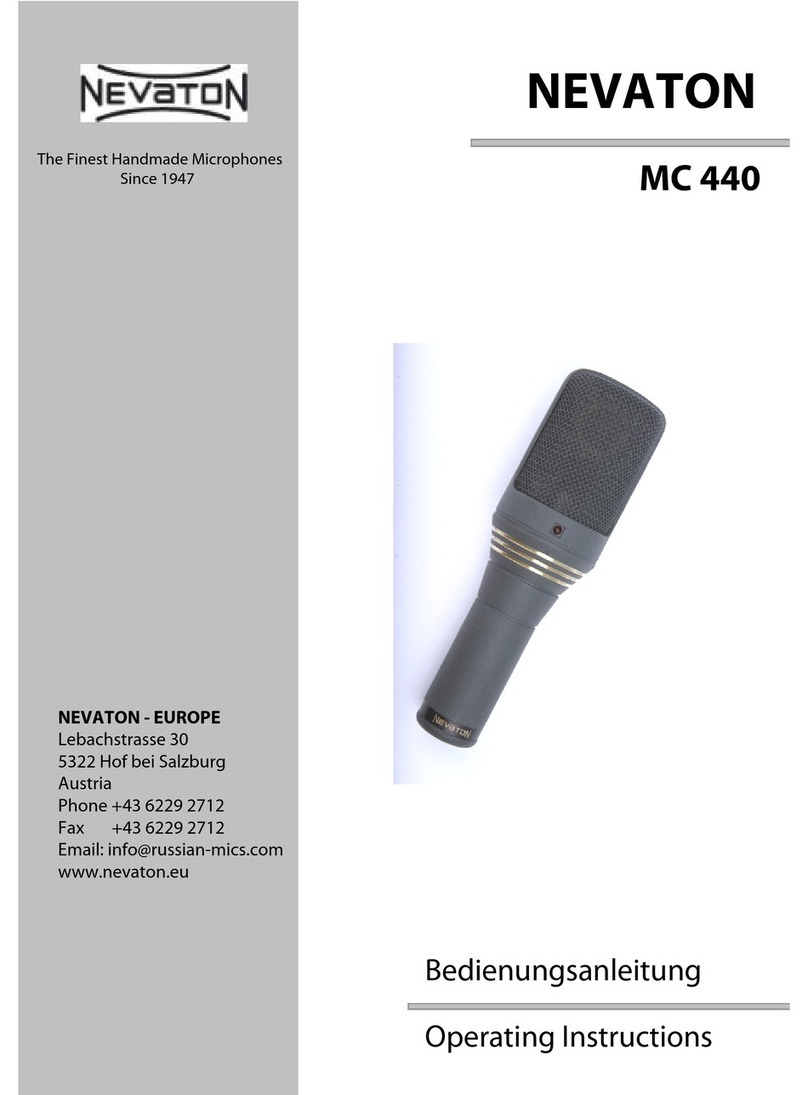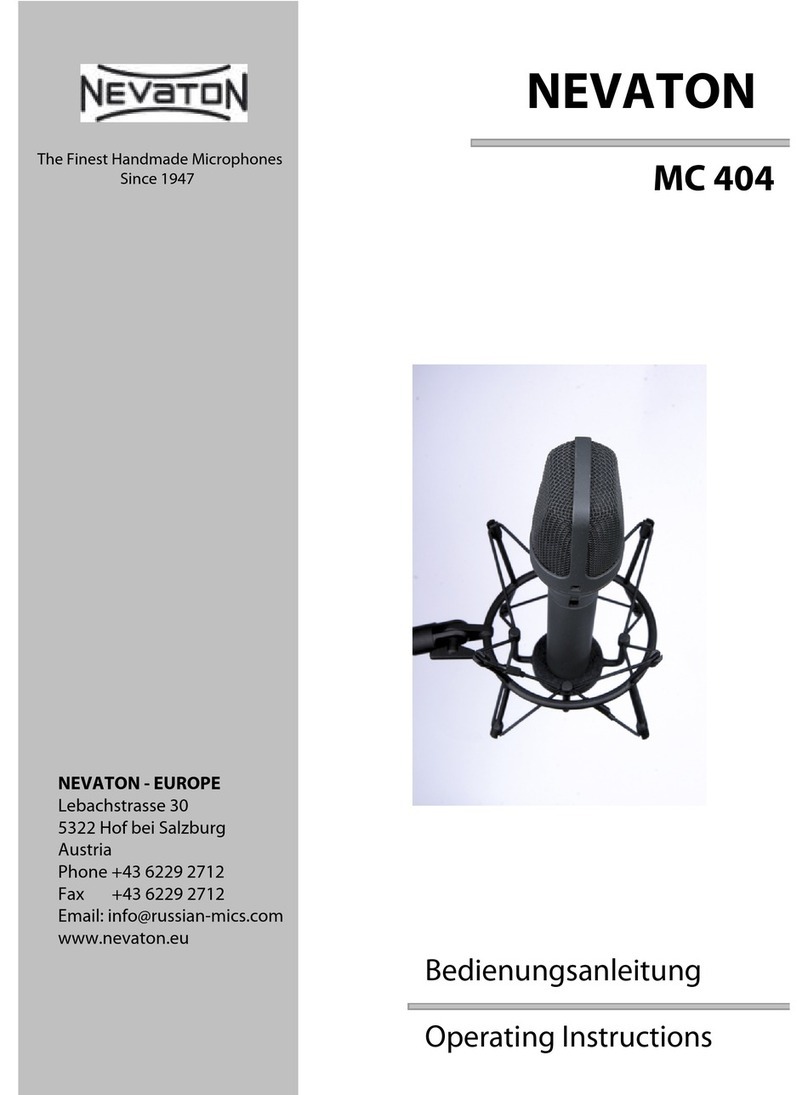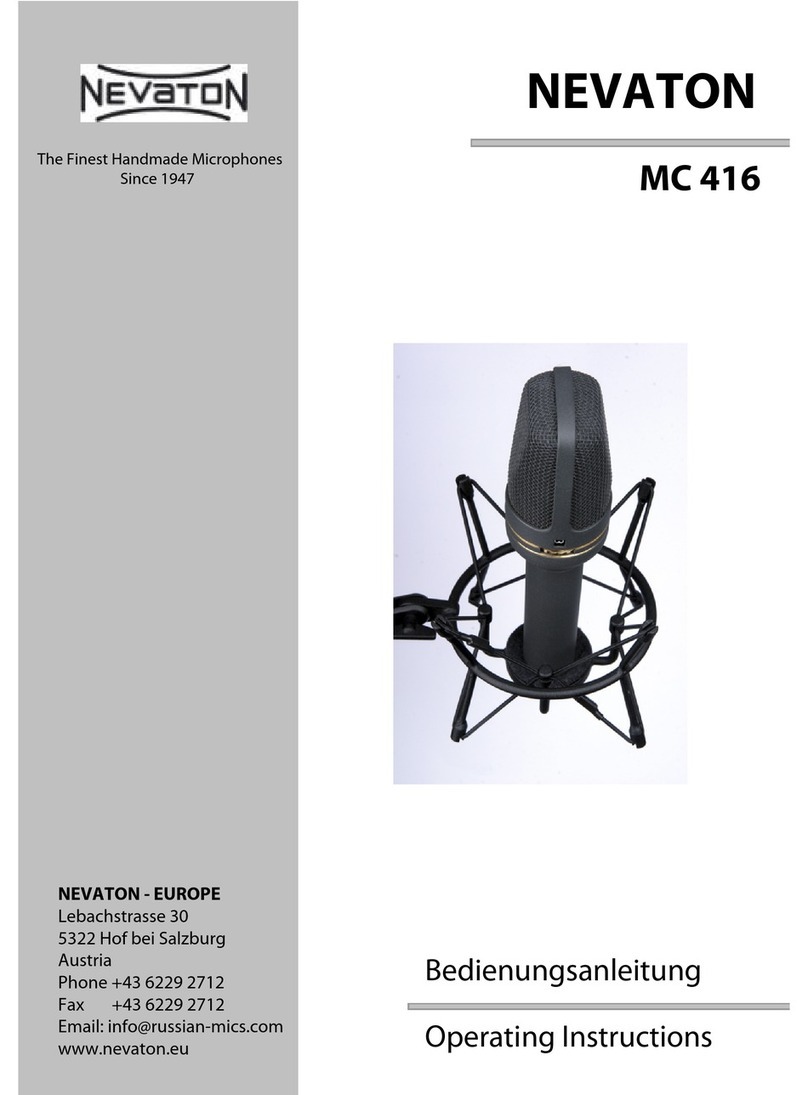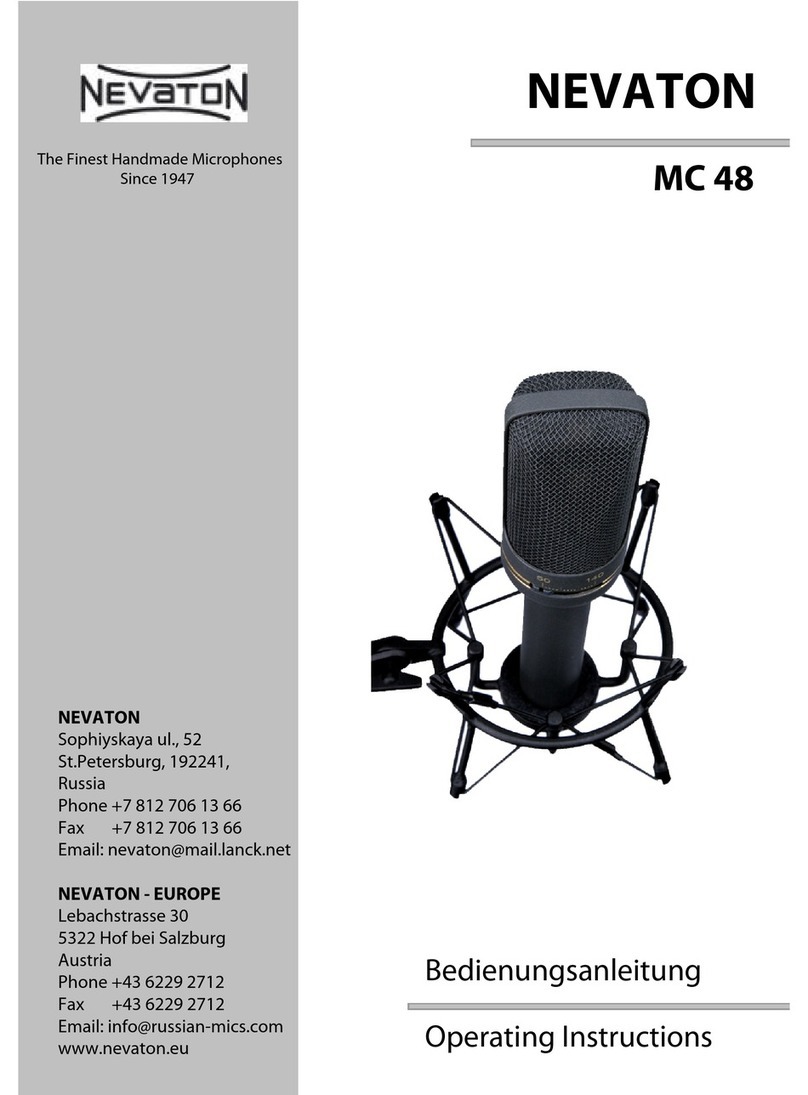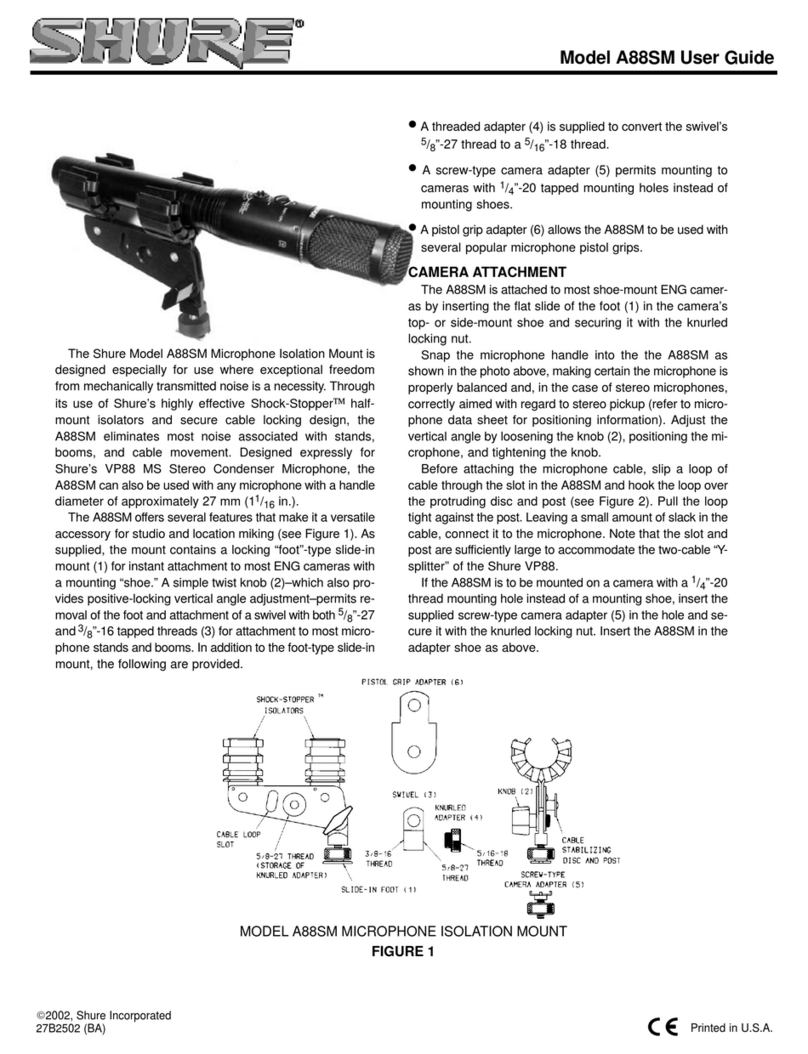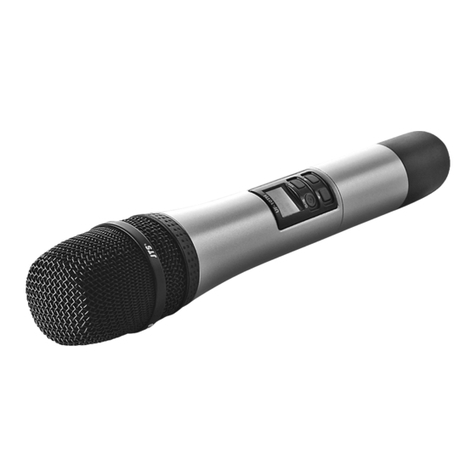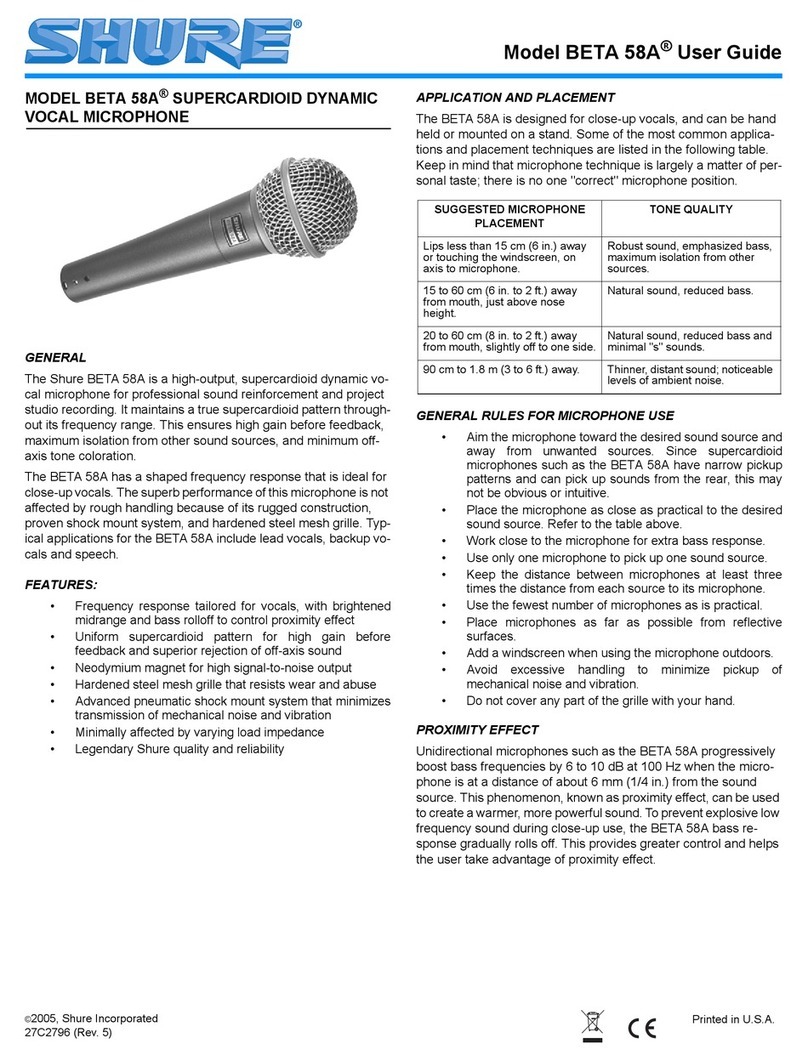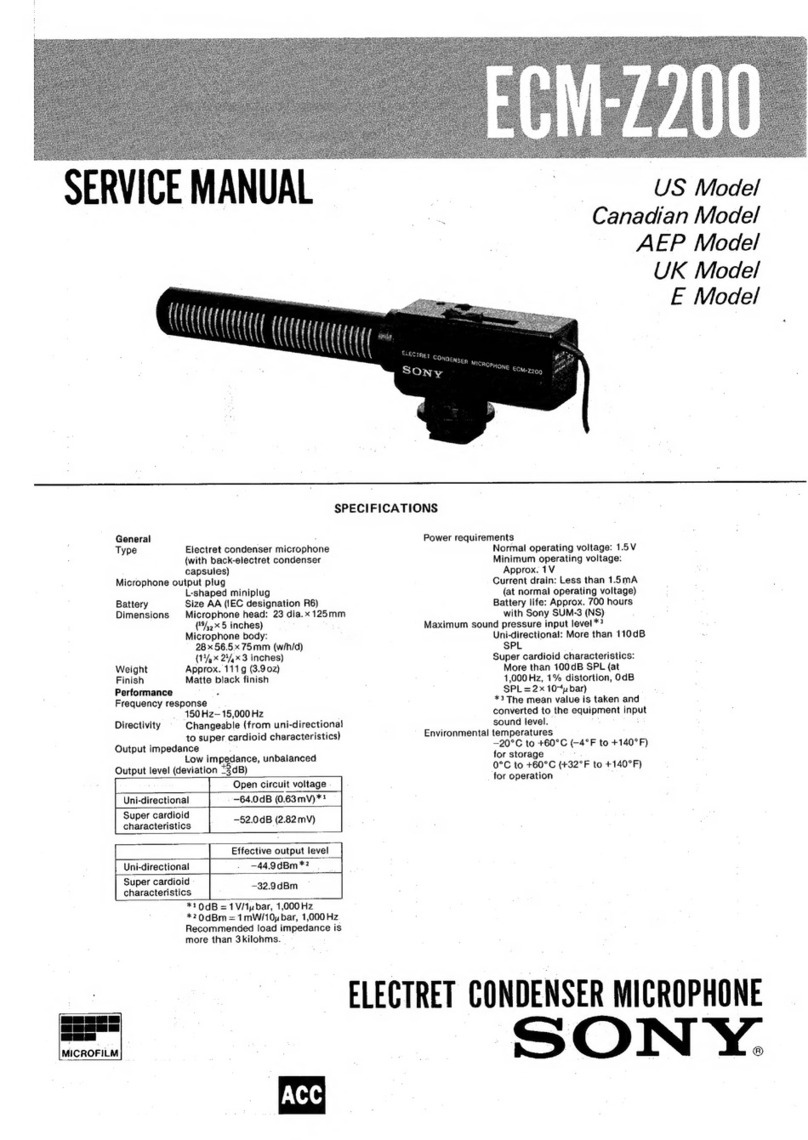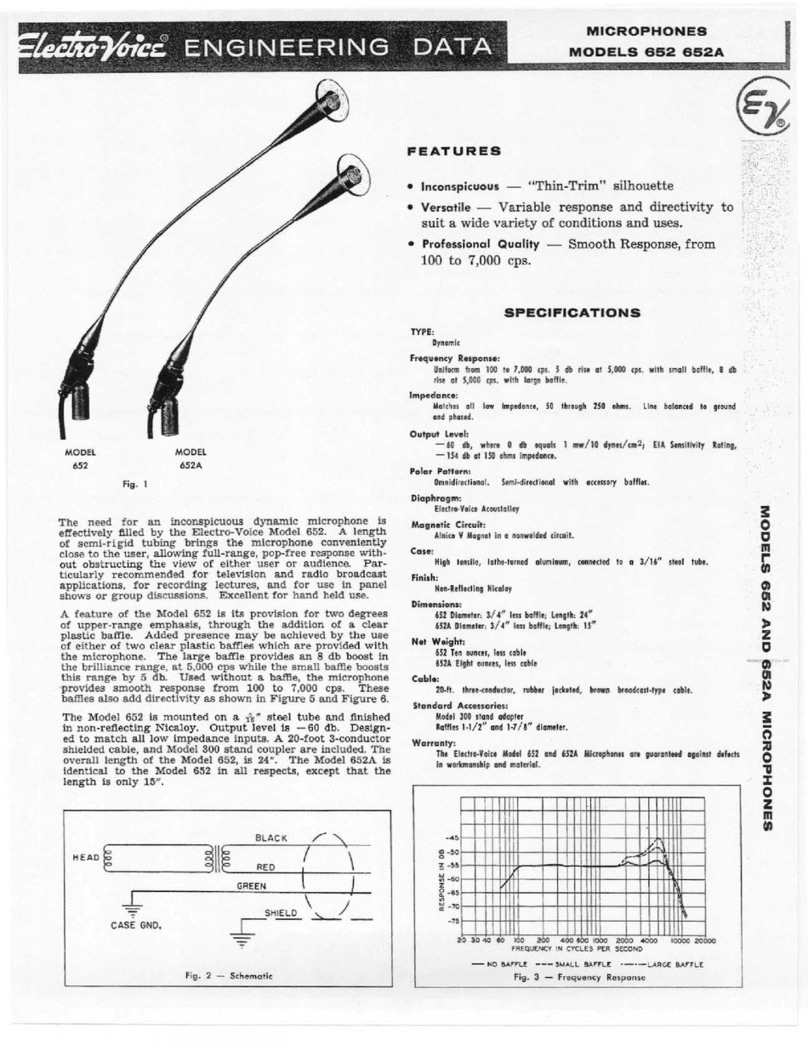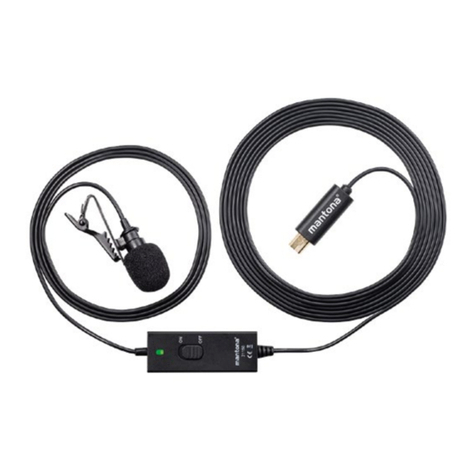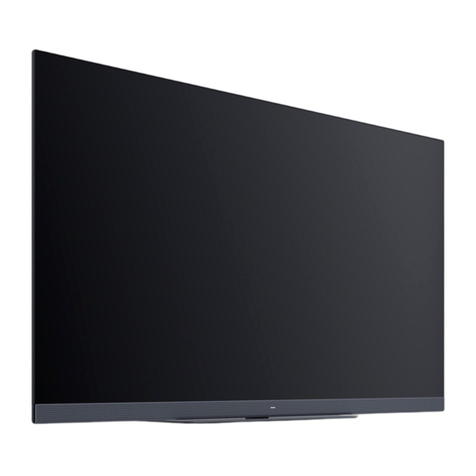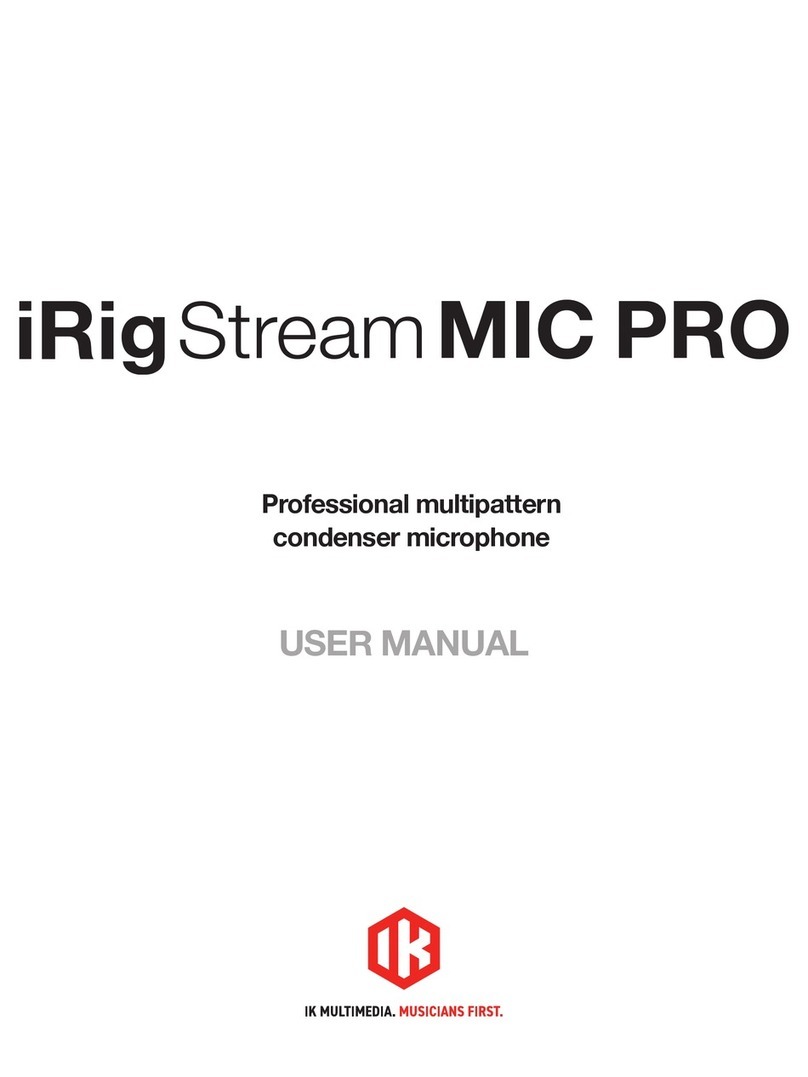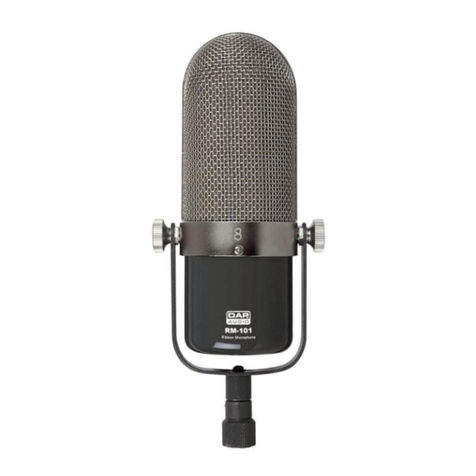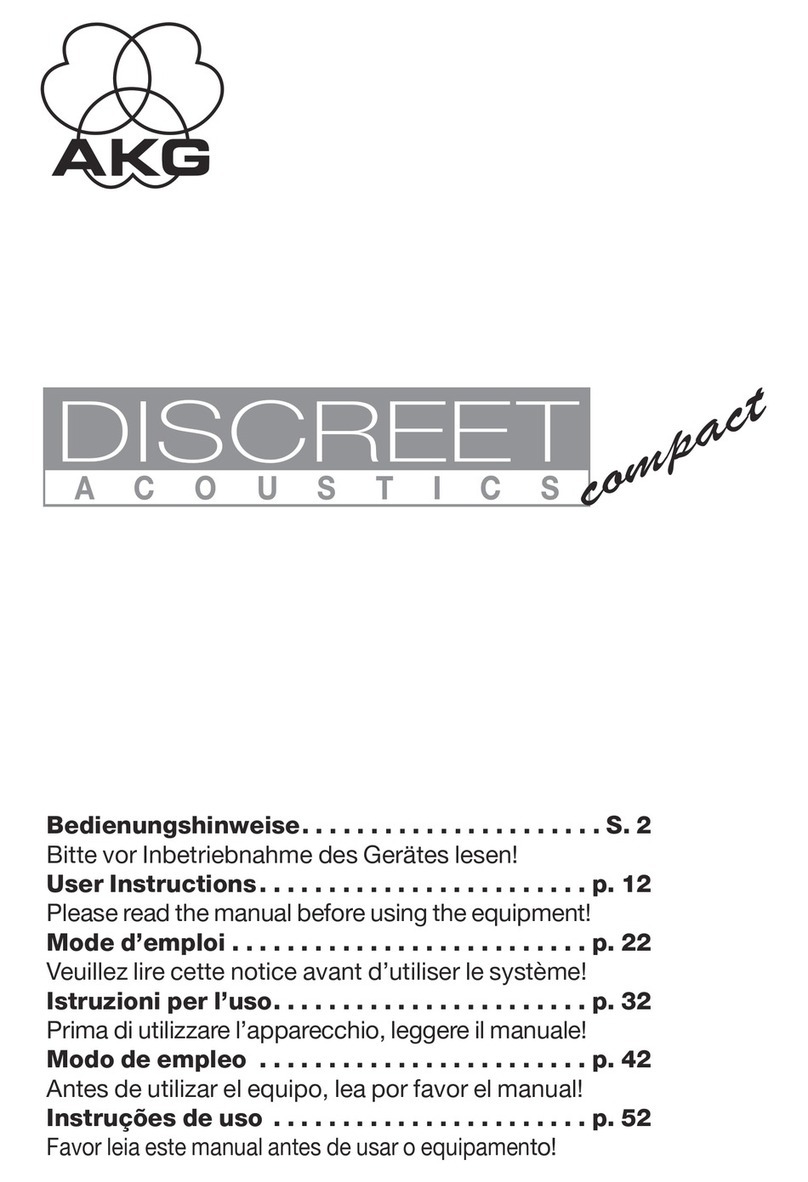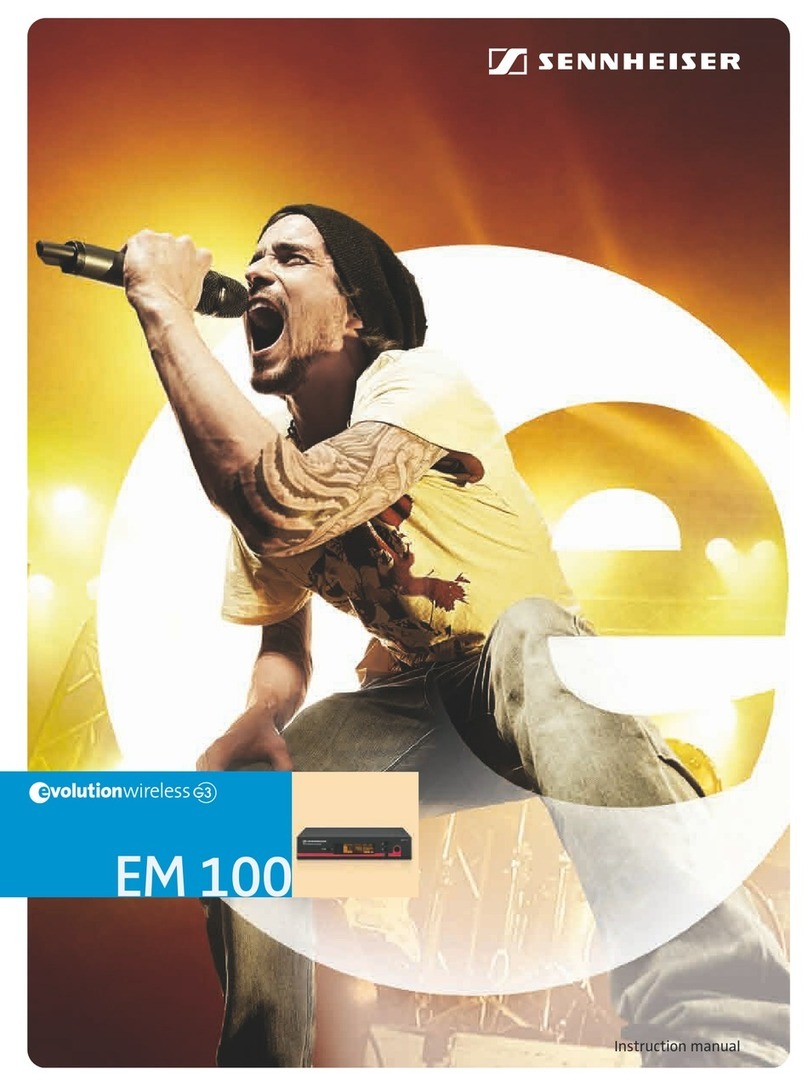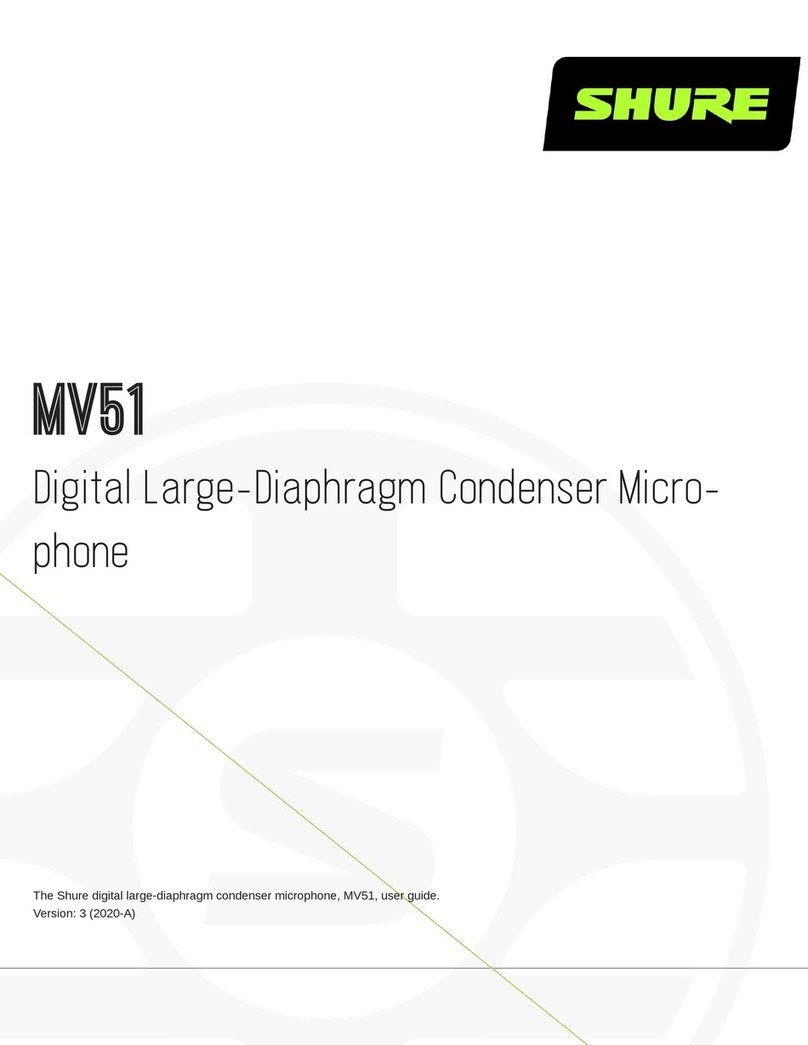NEVATON BPT User manual

1

2
GETTING STARTED: Practical Application of the BPT-Microphone (case studies)
Recording with the BPT is easy: just position the microphone like you would do with any other main-
or spot-microphone, of course depending on what you intend to use it for. What you need to know
on your first recording session with the BPT is the meaning of the color-code of the short break-out
cable Neutrik 7-pin XLR to 3 x 3-pin XLR, which comes with the microphone - so here it is:
“Break-Out Cable” COLOR CODE:
BLACK (or GREY) 3-pin XLR: carries signal of capsule 1, which is “L” (for upright position of the BPT)
RED 3-pin XLR: carries the signal of capsule 2, which is “R” (for upright)
YELLOW 3-pin XLR: carries the signal of capsule 3 “center”, which is the top capsule (for upright)
Fig. 1 (left): Of course the BPT microphone gets positioned like any other mono or stereo
The big ADVANTAGE is that you can record a MONO (center capsule) and a STEREO
signal (L+R capsule) at the same time ! This gives you many more options and creative possibilities on
mix-down. When recording, you could set all three capsules to cardioid, or choose to use the L&R
- -8 or even
omni (right) you see how the BPT-microphone can be set-up for piano recording. You could
try a similar setup in front (or overhead) of a jazz-
Fig. 2 (left): For the recording of a musical ensemble the BPT can become the main-microphone,
which can be accompanied by large-
-BPT main system can be accompanied with
various spot microphones (here: chosen from the Nevaton microphone palette )
(right) The same setup works very well also for a large symphonic orchestra. In this case a surround
recording is pictured, with two cardioids at several meters distance from the front microphones,
facing the rear wall.

3
1. Preamble –“Why build a 3 capsule microphone ?”
-Pfanzagl-
figure-of-eight capsule, which is added to the well known Blumlein-Pair of two figure-of-8
capsules, which have an included angle of 90° and are oriented at +/- 45° towards the sound
source. The new capsule is pointed directly towards the middle of the sound source at 0°.
Why add a third capsule at all, as the Blumlein-Pair already captures 360° ? The Blumlein-
Pair arrangement is appreciated by m
Dooley, 1985]), which is attributed also to the fact that the signals of the two channels are
largely decorrelated (meaning: very different) also at low frequencies, which is important for
good spatial impression. This is a unique feature which is almost exclusively reserved to
crossed figure-of- -
techniques), as all other microphone patterns (with hypercardioids as an exception) do not
provide similar signal-separation for low frequencies.
As a one-point recording technique with highly directional microphones the BPT-mic is
characterized by providing precise localization.
Tomlinson Holman described this behaviour, which can also be found with figure-of-eight
microphones, with the following words: -pair] aims the
microphones to the left and right of center; for practical microphones, the frequency
response at 45° off the axis may not be as flat as on axis, so centered sound may not be as
This is of course one of the main reasons why it makes very much (sonic) sense to add a
third figure-of-eight microphone or capsule to the -
of
the Center-capsule in relation to the L and R capsule.
For normal recording applications, the level of the center microphone will usually be set
between -6 dB to -3dB in relation to the L and R microphone.
Deviations of this are of course possible and for some applications it might make sense to
set it at -10dB or if it is necessary to emphasize the center of the sound-source it may be
set to 0dB or even more.
In order to shield off unwanted signals from the rear it is preferable to place an acoustic
barrier (for example in the form of a sound-absorptive acoustic panel) behind the BPT
microphone. This helps to achieve a better direct-/diffuse sound (i.e. direct signal /reverb)
ratio and enables the sound engineer to move the system further away from the sound-
source thereby usually achieving also a better balance between instruments (or instrumental
groups) in case of larger ensembles.
(Rem.: If the absorptive panel cannot be used for optical reasons, the three capsules of the
microphone can be switched to cardioid pattern and attenuate sound from the rear in this
manner. However if possible, the use of an absorptive panel is recommended, as this will
result in a much clearer sonic image achieved in the recording, since diffuse sound arriving
from the back is being eliminated more effectively)

4
2. Using the Center-Capsule C to “zoom in” on the sound source
centre of the sound source, while as a side
effect, desirable or non-desirable increasing the
art of the overall signal.
- see [Wittek, 2002]) have
shown that if C is set at the same level as the L
and R microphone the result will be a gradual
increase and boost of volume by 3 dB towards
the middle of the sound-source.
This can be of advantage in connection with
broadcast-applications (news, location recording,
etc.), as it is common practice to work with
(highly) directional microphones in order to
If the center caps adjusted to a
relative level of -10dB in relation to the L and R
capsule, almost no emphasis or gain is added to
the sounds coming from the centre of the sound-
source.
It is of advantage to use the additional fig-8
center-capsule, as it helps to achieve a more
stable sound-image especially if sound sources
with complex (i.e. frequency dependent)
radiation characteristics (as is the case with many
music instruments) need to be recorded.
Fig. 3: BPT-mic (normal mode)
2. Use of a HPF on the Center-Capsule (for enhanced de-correlation)
Results of various researchers have shown that low signal-correlation (cross correlation) is
necessary at frequencies below approx. 200Hz in a stereo (or binaural) signal in order to
have good spatial impression as a listener (see among others - [Hidaka et al, 1995] and
[Griesinger, 1998]).
Due to the 90° physical offset angle between the L and R capsule, which have fig-8
characteristics, the signal of these two will be completely de-correlated over the entire
frequency response (to be precise: for diffuse sound signals, arriving from all directions).
Adding the signal of the center capsule (by mixing it in on the stereo-bus, or routing it to the
center-speaker in a 5.1 surround setup) signal perception will certainly become more
correlated over the entire frequency band. For the sake of good spatial impression,
correlation for bass-frequencies should be kept at a minimum: the simplest way to achieve
this is by setting a High-Pass-Filter (HPF) on the signal of the Center capsule, with a cut-off
frequency somewhere in-between 90 and 160Hz, depending on the frequency response of
the sound-source, the acoustics of the room, etc.

5
This can be done on the mixing desk, or already while recording by use of the High-Pass
Filter-control (fc=90Hz) on the rear of the BPT-mic set to the position on the right.
3. Choosing the right distance between BPT and sound-source
Concerning the normal Blumlein- omlinson Holman stated
that
thus may have to be placed closer
to it, as in a normal concert situation the rear lobes of the fig-8 microphones will mainly pick
up reverb from the hall and therefore the direct/diffuse sound ratio will be affected in a
negative way.
If the natural mix of these two signal components is too reverberant, an absorptive panel
should be placed behind the BPT.
When using an absorptive panel, the soundfield of the rear hemisphere is kept away from
the BPT and therefore the critical distance (i.e. reverberation radius; see appendix) is
effectively doubled for the microphone, which means it can be moved away from the sound-
source by the amount equivalent to the reverberation radius, while the direct/diffuse sound
ratio will remain the same (due to the addition of the absorptive panel behind the BPT).
A second important factor needs to be considered for the placement of the BPT microphone,
which is the physical opening angle of the L and R fig-8 capsules (angled at +/-45° relative to
the sound source). Even though the Blumlein-Pair is said to have a correct recording angle of
120° (see [Streicher and Dooley, 1985]), it is certainly preferable if the main body of the
sound source stays well within the included angle of 90°, as otherwise there is the danger
that a sound source in front on the far left might be picked up by the rear lobe of the right
fig-8 capsule of the Blumlein Pair and therefore will be replayed not only from the left side
(left capsule signal), but also from the right side, but with a phase inversion.
In [Faulkner, 1981] the question of optimal microphone positioning in order to achieve a
good balance between all instrumental groups of an orchestra in a concert location has been
discussed. As sound engineer Tony Faulkner points out,
the main (stereo) microphone at a distance of about half the width of the orchestra away
from the sound-source can be enlarged to the whole width in case of highly directional
microphones, which is the case of fig-8 microphones (and even more so, if an absorptive
panel is used). Therefore a microphone position in the 6th up to the 9th row, as pictured in
fig.4 -Pair or
BPT-mic.

6
Fig. 4: Microphone position vs. listener position in a concert hall [adapted from Faulkner,
1981]
4. RECORDING IN SURROUND Version 1:
The BPT in 5.1 mode (see Fig. 5 ->)
As stated by audio engineer Tomlinson Holman
Two channel stereo can produce the sensation of
looking into a space beyond the loudspeakers;
multichannel stereo can produce the sensation of
[Holman, 2000]
This is a strong statement for making surround
recordings and the BPT makes this quite easy, as
no external processor is needed:
If you want to create a 5.1 surround signal with
just one BPT-mic, the pattern selector needs to be
switched to total left position. In this mode the
top capsule (# 3) is in omni mode (and rotated to
+45°), while capsules #1 and #2 remain in fig-8
mode. As the 5.1 signal is going to be derived by
using MS-decoding, the BPT-mic as a whole needs
to be rotated by 45° so that the lowest capsule
(#1) becomes a figure-8, which picks up sound to
the LEFT and RIGHT of the microphone, while
capsule #2 picks up the FRONT and BACK sound-
field.

7
To help visually with the right orientation of the mic-body, there is dashed line indicating the
correct 0° alignment of the microphone: ----FRONT 5.1 -----
As can be seen in the scheme of figure 4, the 5.1 surround signal is then created by
combining (mixing, i.e. summing) the signals of the omni-capsule (#3) with the fig-8 capsules
(#1 and 2#) in an appropriate way.
Fig. 6: signal processing schematic for 3-capsule microphone (adapted from [Eargle, 2004])
For the 5.1 Center-channelthe signal of the omni--back capsule
e combined: W + X
(capsule #1) the phase needs to be
reversed by 180°: W + X - Y
Left Surro) we need to perform: W X + Y
): W X - Y
The processing as seen in fig. 4 which might seem complicated at first can very easily be
achieved on a normal mixing desk: on digital mixing desks, which allow to assign the signal-
input of a channel A/D-converter to multiple channel strips, this is particularly easy.
The graphic below shows a routing assignment on an 8-bus console which mixes the W, X
and Y signals on the appropriate busses for 5.1 recording or reproduction.

8
Fig. 7: BPT-microphone signal MS-decoding on an 8-bus mixing desk
The routing scheme above also makes use of the PAN function on a mixing desk, which is not
gle busses. In that case all input faders
can be set to 0dB and the PAN-control at center.
The -3dB level attenuation on the fader needs to be done if for L/R-routing on stereo-busses
the PAN-control needs to be employed, as a signal which is panned in this way has a 3dB
gain in respect to signals which are routed to both bus-channels with the PAN-control set at
Creating an LFE-signal:
The signal-routing layout shown in fig. 7 does not provide an LFE-signal; should this be
needed, the easiest way to generate one would be to bring up the W (omni) signal on a free
input-channel, then low-pass filter it with a cut-off frequency set somewhere between 90 -
120Hz, route it to bus #4 and balance it in level wise, according to taste.
5. RECORDING IN SURROUND - Version 2: two BPT’s in “Back-to-back” mode (2 x 3.0)
There is a second possibility to achieve a 5.1 surround recording with the BPT microphone,
which offers better channel separation (especially between front and rear signals) by use of
2 BPT microphones and (at least one) acoustic baffle and absorptive panel in-between.
In this case for both front and rear a BPT-mic in 3.0 mode is being used, which directly
deliver the signals for L, Center, Right (Front) and LS, RS (Rear).
This version has the advantage that no signal-processing (MS-decoding) is needed.

9
Fig. 8: ack-to-backconfiguration with absorber panels (for surround rec.)
The distance dcontrol the amount of
spatial impression contained in the recording: if dis in the range of 50cm to 100cm spatial
impression will be less, if dis in the order of several meters the front and rear signals will be
more de-correlated and spatial impression will be larger. However, a distance of 10m should
not be exceeded between the front and rear BPT in order to keep time-of-arrival differences
for sound below 30ms, as above this limit echo effects might occur, depending on the room
acoustics and placement of the BPT- microphones in relation to the sound source.
6. Using the Figure-of-Eight pattern to “re-balance” the orchestra (and soloists)
Fig. 9: Polar diagrams of a double membrane condenser mic (Neumann KM88)
As can be seen in fig. 9 off-axis level attenuation is much more pronounced with fig-8
microphone patterns, than with cardioids: while a cardioid will have only 1-2dB attenuation
at 30° and approx. 4 dB at 60°, the fig-8 pattern already exhibits a 9dB level drop at 60°,

10
which - due to its polar pattern
attenuation) at 90°.
This strong directional characteristic of the fig-8 pattern can be used as an advantage if one
needs to re-balance the instrumental groups (including soloists) of an orchestra:
For this purpose it is recommended to point the main axis of the fig-8 towards the sound
element which needs the most support level-wise. In the example of fig. 10 below, the mic is
directed towards the woodwinds, but due to the much closer distance to the first desks of
the sting section, these will still have an advantage of 2dB over the woodwinds.
Fig. 10: vertical attenuation
(angle of incidence) as a
creative tool for level
balancing
In a typical situation, pictured in the diagram above, the microphone could be positioned
approx. 3m (9feet) above the first desks of the strings, while the woodwinds might be
approx. 9m (27 feet) away. Hence a distance ratio of 1:3 applies. As can also be seen in the
direct
sound suffers a level drop of 6dB, when the distance is doubled (2:1). Doubling the distance
again (4:1) would lead to another level drop of 6dB, so a total of 12dB attenuation; a
distance ratio of 1:3 therefore results in a level drop of 9dB.
[Rem.: usually, when miking the strings from above they might tend to sound rather bright
and sometimes aggressive, therefore a slight level-drop (and also high-frequency
attenuation) due to the off-axis position of the strings might even be an advantage.
However, we might be able to achieve a more balanced overall sound by moving the BPT
main-mic further out in the hall ]
If we imagine a situation of a hall with a reverberation radius Dcrit = 6m for example, we
might feel encouraged to move the main microphone (BPT) further back in the hall (with or
without acoustic panel behind), so it might be slightly less than 6m away from the first
strings and therefore approx. 12m away from the woodwinds.
If we decide to tilt the main axis of the fig-8 down a bit so that it is directed towards the
middle between the woodwinds and the first desks of the strings, we would get the same
amount of off-axis level attenuation for both of them, while the level drop due to distance
would result in an advantage of 6dB for the strings in comparison to the woodwinds.
The further we move the BPT away from a large sound source like an orchestra, the more
we can use the right orientation of the main-axis to feature sound elements within the

11
sound source, who need that kind of support. In the absence of spot-microphones, soloists
in front of the orchestra next to the conductor, or a harp further back in the orchestra might be
the usual candidates which need such help ...
To give an example of the effectiveness of diffuse sound attenuation due to the use of an
acoustic panel behind the BPT microphone: in the concert hall of the Salzburg Festival
(Dcrit=5,5m) in order not to obstruct sight-lines from the balcony - the BPT mic with panel is
. Since the curved absorptive panel shades off
more or less the rear half-hemisphere of diffuse sound, the critical distance is almost
doubled, so even with such a large distance to the orchestra, the direct-/diffuse-sound ratio
is stil nice-sounding results for high-quality documentary
recordings ...
7. Flat absorptive panel vs. curved panel
As already mentioned above, in many recording situations the final result will benefit from
the use of an absorptive acoustic panel behind the BPT-microphone in order to re-balance
the direct- to diffuse-or use of the BPT in 3.0 mode. If the BPT is used
in the .1 mode, of course the rear side should not be covered or shielded off potential
sound sources or diffuse sound).
A curved acoustic panel will usually be more effective, as with the same surface it manages
hand, some focusing effects may be noticed with a curved (rounded) acoustic panel, if the
absorptive materials are not fully absorptive over the whole frequency range (which is hard
to achieve sometimes if its mechanically supportive elements are made of metal).
In practical experiments it has been found that curved absorptive panels, with diameters
useful in connection with the BPT microphone (diameter approx. 40cm), may produce
unwanted reflections (and therefore sound coloration due to comb-filtering effects) in the
frequency band roughly between 500 700 Hz. In this case a band-filter tuned to about
600Hz with Q=3 to 5 and an attenuation of -4 to -8dB (inserted on at least the L and R BPT-
mic signal) will help to eliminate unwanted sound coloration artifacts.
Fig. 11 - (left): BPT with rounded panel; (right): BPT surround-recording with 2 BPT-mics in
back-to-backmode in auditorium (approx. 5m spacing) with rounded panel (front) and flat
acoustic panel (back)

12
APPENDIX:
Decrit : with 1ft = 0.3048m or 1m = 3.2808 feet
Dcrit [m] = 0.057 sqrt (V [m3] / RT60 [s]) Dcrit
or
Dcrit [ft] = 0.03147 sqrt (V [ft3] / RT60 [s])
rb time of the room in seconds
sound reaches the same level (volume) as the direct sound.
Fig. 12: crit): Relation between SPL and distance to sound source for direct- and
diffuse-sound in a room
Hall
Volume [m3]
Volume [ft3]
Seats
RevTime [s]
D_crit [m]
D_crit [ft]
Ottobeuren (church, Germany)
130000
4590300
n.a.
7,00
7,77
25,48
Royal Albert Hall, London
86650
3059612
5080
2,40
10,83
35,53
Amsterdam Concertgebouw
18700
660297
2206
2,00
5,51
18,08
Boston Symphony Hall
18740
661709
2631
1,80
5,82
19,08
Vienna Musikverein
14600
515526
1680
2,05
4,81
15,78
Teatro della Scala (opera, Italy)
11252
397308
2289
1,24
5,43
17,81
Eisenstadt Castle - concert-hall
6800
240108
n.a.
1,70
3,60
11,83
King's Theatre, London
4550
160661
n.a.
1,55
3,09
10,13
Brahmssaal, Vienna Musikverein
3390
119701
604
1,63
2,60
8,53
Esterháza Castle - concert hall
1530
54024
n.a.
1,20
2,04
6,68
control room (typ. rec. studio)
118
4167
n.a.
0,24
1,26
4,15
Table 1: Reverb time and resulting critical distance for performance spaces of different size

13
High Pass Filter Control
on rear side of BPT-Microphone:
On the rear side of the BPT a filter-selector can be found:
A High-Pass Filter with corner frequency at 90Hz can be switched
in for all three capsules, if needed.
Switch in left position, all three capsules linear.
Switch in center position: HPF for all 3 capsules
Switch in right position: only top capsule #3 has HPF activated
Literature references:
Eargle, John (2004):
Hi Fi News Record Rev., pg. 44ff, July 1981
Griesinger, David (1
th Int. Conf AES on Small Room Acoustics, pp. 136-149, Denmark Oct/Nov
1998 (see also: www.word.std.com/~griesngr )
Hidaka, T., Beranek L., and Okano, T. (1995): "Interaural cross-correlation, lateral fraction, and low-
and high-frequency sound levels as measures of acoustical quality in concert halls", J. Acoust. Soc.
Am. 98 (2), August 1995
Holman, Tomlinson (2000): -
Streicher, Ron and Dooley, Wes (1985): Journal
of the Audio Engineering Society, vol. 33, No7/8, pp. 548-556, July/Aug. 1985
Wittek, Helmut (2002): (Software), www.tonmeister.de
NEVATON “BPT”-Microphone Technical data:
- Frequency Range: 20-20000Hz
- Free Field Sensitivity at 1000Hz and 1000 Ω: 20 +/-2 mV / Pa (or better)
- Equivalent SPL DIN/IEC 651: 4 dB(A) for cardioid, omni and 7dB(A) for fig-8
- Max. Sound Pressure Level [for THD 0,5% ]: 142dB
- Dynamic range: 137 dB (135 dB for fig-8)
- Nominal output impedance: < 50 Ω
- Recommended Load Impedance: >= 1000 Ω
- Capsule diameter: 33 mm
- Microphone body diameter: 48 mm
- Length: 245 mm
- Weight: 820 g
- Phantom power (48V +/- 4V)
- Current consumption: 7 mA per capsule
- Relative Humidity: operating range up to 80% (at +20°C)
- Connector Type: XLR, 7-pin (male connector built into microphone)
- Pin assignment: 1= GND, pin 6+7 = signal „Left Capsule (#1)“ +/-,
pin 4+5 = signal „Right capsule (#2)“ +/-, pin 2+3 = signal „Center capsule (#3)“ +/-

14
NEVATON “BPT”-Microphone Frequency responses:
FACEBOOK: www.facebook.com search for: BPT-Microphone
YOUTUBE: www.youtube.com search for: Nevaton BPT [User manual Rev. 1.5]
Other NEVATON Microphone manuals
